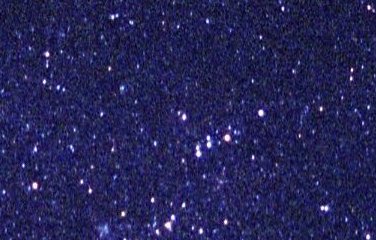 The runaway star AE Aurigae lies at the center of the image in the
heart of Auriga's Milky Way, up and to the left of the string of
stars made by 14, 16, 17, 18 and 19 Aur. AE and 17 Aur (an eclipsing binary better known
as AR Aur) are both located on the Anticenter
Page. The open cluster Messier 38 lies near the lower left edge.
The runaway star AE Aurigae lies at the center of the image in the
heart of Auriga's Milky Way, up and to the left of the string of
stars made by 14, 16, 17, 18 and 19 Aur. AE and 17 Aur (an eclipsing binary better known
as AR Aur) are both located on the Anticenter
Page. The open cluster Messier 38 lies near the lower left edge.